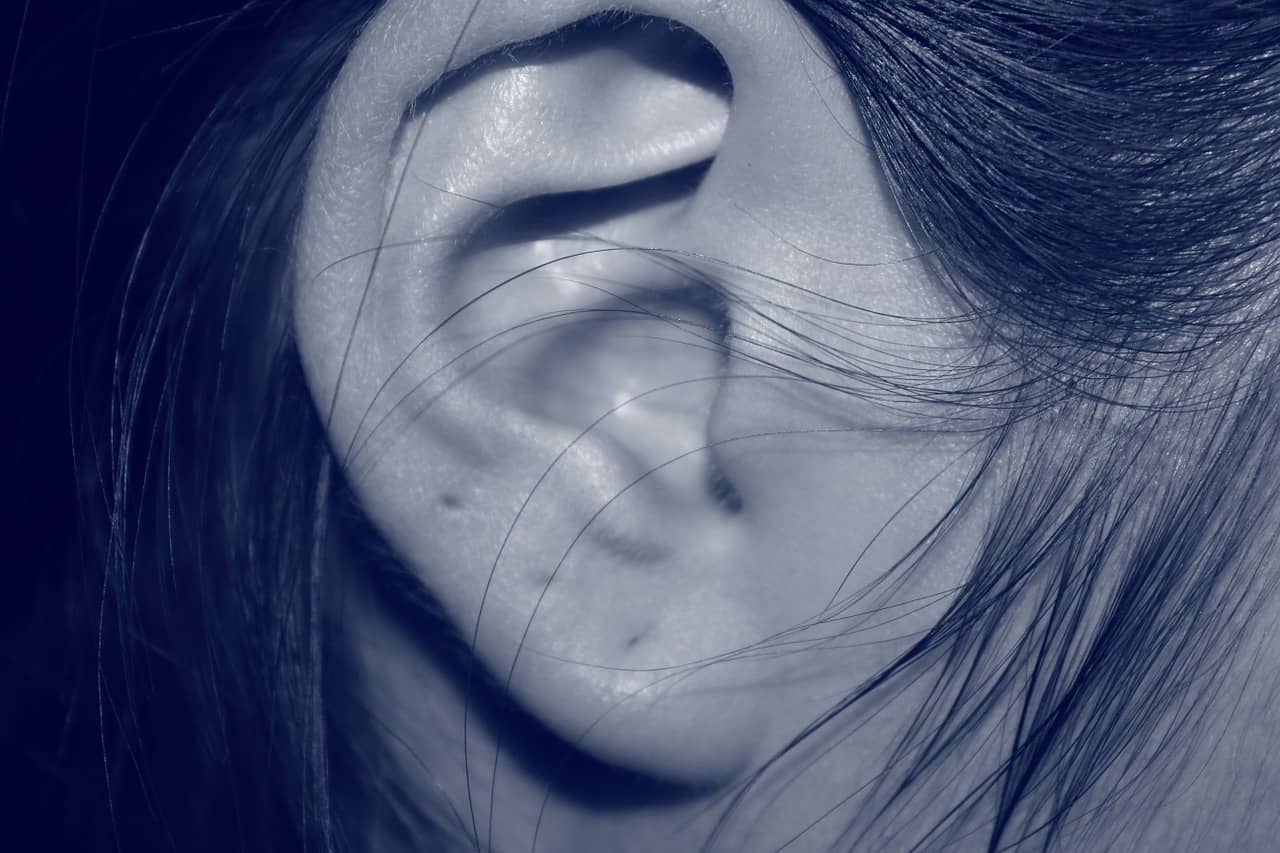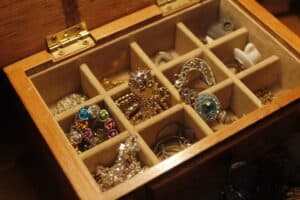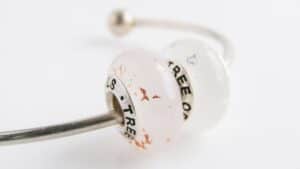I remember the first piercing I got, was for my ear and it was a feeling of great triumph. However, there was this lingering question as to when my piercing would heal, and when I would get a chance to play with accessorizing it. So this post is intended to help all those with this question, and visit similar questions around the healing of piercings.
Let’s start with looking into the time taken for piercings to heal normally, which will help us in answering our pivotal question.
THE SUBSIDING OF PIERCING PAIN
Pain and discomfort are the very first feeling one experiences post getting a piercing done. In addition, the time that this initial pain pain takes to subside can also drive the time it takes the piercing to heal, to a great extent.
Before looking at the time it takes for piercing pain to subside, lets try and understand the reason why it pains when one gets their body parts pierced.
Why Is My Piercing Hurting?
The simple reason as to why piercings hurt just after you have goot them, is because the process involves puncturing a cluster of tissues in your body, which sends a shock signal to the brain, and pain is the obvious reactive response. The subsequent pain signals the fact that new tissue needs to build up at the pierced spot. However if your piercings hurt even after two weeks from the day you got them, this could signal an inflammation or infection, and its best to visit your piercer or a doctor.
How Long Does It Take For a Piercing To Stop Hurting?
The time it takes for the pain to subside can vary considerably based upon the type and part you have got pierced. The fleshy parts of the body such as earlobes do not pain that much or for long, and you can expect the pain to go away in 2-4 days. The piercings done on the cartilage , can pain for as long as a month from the time of piercing. This has got to do with the fact that cartilage is a thick tissue , and thus takes longer to heal.
THE PIERCING HEALING PROCESS
Piercing , as like any other wound that we get, is a puncture into the skin tissue. This is why it follows the usual process of wound healing, and this is an important foundational understanding to start with, in knowing if your piercing has healed or not.
The following phases characterise the healing process of piercing, or any wound in general.
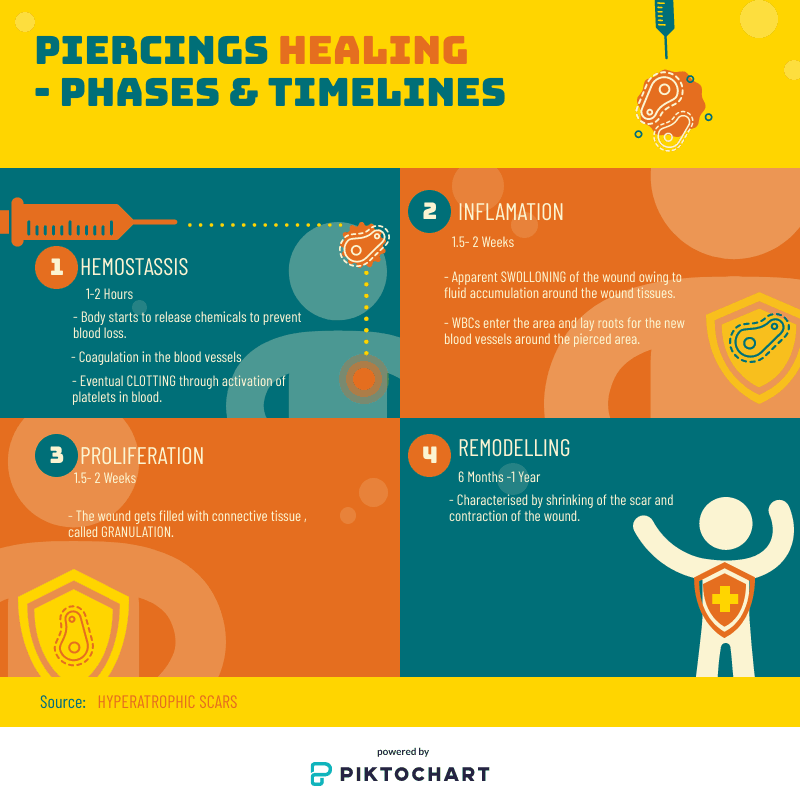
1. HEMOSTASSIS
The very first stage of the process, this kicks in right after the piercing has been inserted. This involves the jeweler applying instruments to the pierced area holding the jewelry, with the intent to stop blood flow away from the wound. Using cotton swabs at 20-30 second intervals, this forms the exterior commencement of the clotting process. Inside, the vessels, the collagen fibres on the vessel walls activate the platelets to begin the clotting process naturally.
2. INFLAMMATION
The second stage in the process, the inflammatory stage can also be perceived as a ‘defensive’ stage, where the body tries to fight malicious bacteria and get rid of debris on the wounds. This function is performed by white blood cells called Neutrophils , along with Macrophages , that release immunity cell attracting proteins. This phase lasts for up to 2 weeks from the time your get pierced, and is characteristic of signs of healing such as :
1. Soreness of the wound
2. Redness in adjoining areas
3. Whitish drainage from the wound
4. Occasional/apparent swelling
3. PROLIFERATION
This is the phase where granulation and crust formation commences over the wound. The healing process actually progresses from outside to the centre, thanks to the Fibroblasts which pull the outer edges of the wounds inwards. this crust tissue is very delicate till this stage, and this is why it is not recommended to change your piercing jewelry till about 4 weeks.
4. MATURATION or REMODELLING
Longest phase in the process of healing and can last from six months to two years. This phase is characterised by the wound changing and completely healing, while getting rid of the healing cells in the process.
How Long Does It Take For Piercings To Heal?
Most expert agree that the time it takes for piercings to heal varies, subjective to factors such as the body part being pierced, the susceptibility to develop problems, the weather conditions during the healing period and the degree of care and caution expended.
It’s crucial to examine each of these in more details, to truly understand if and when your piercing has healed, and the time this would take.
1. The Pierced Body Part Itself
The body part which you have just got pierced is the most important determinant of the time it would take to heal. Not all body piercings heal in the same time, and depending upon the tissue composition and other factors, the healing time may vary.
Below is a compilation of the general healing time time frames of various types of piercings. These were collated from some very targeted source on this, which I have listed at the bottom.
| PIERCING TYPE | BODY PART | MALE/FEMALE | Healing Time | Approx. Cost | INVOLVED TISSUE TYPE |
|---|---|---|---|---|---|
| Earlobe | Ears | Male/Female | 6-8 weeks + | $40-$60 with jewelry | Soft Tissue |
| Ear Cartilage | Ears | Male/Female | 6-9 months + | $20 with a piercing gun(not recommended by most) $40-$50 with needles | Cartilage |
| Daith | Ears | Male/Female | 6-9 months + | $40-$80 for the piercing and $50 for the jewelry | Cartilage |
| Rook | Ears - Upper | Female | 3-4 months + | $30-$100 | Cartilage |
| Eyebrow | Facial | Male/Female | 3-4 months + | $20-$70 | Soft Tissue |
| Nostril | Facial - Nose | Female | 3-4 months + | $30-$80 for piercing with needles $10-$50 for the nose stud or ring | Soft Tissue |
| Septum | Facial - Nose | Male/Female | 6-8 weeks + | $40-$90 | Soft Tissue |
| Bridge | Surface Piercing - Nose | Male/Female | 3-4 months + | about $50 | Surface Piercing - Soft Tissue |
| Monroe | |||||
| Philtrum/Medusa | |||||
| Cheek | |||||
| Tongue | |||||
| Nipples | Females | 6-9 months + | |||
| Nipples | Males | 3-4 months + | |||
| Navel | Male/Female | 6-9 months + | |||
Can ear piercings heal within 3 weeks?
Ear piercings can be either done on the earlobe, or inside the ear (the cartilage), and neither of them can completely heal in a 2-3 weeks period. The recommended average time to wait for your ear or any other piercing to heal is 6-8 weeks. If however you are thinking if a pierced hole would close in 2-3 weeks, then wearing no earring in and putting a band aid on it can speed things up and help you close the piercing hole within 3 weeks, for most people.
How long does it take for a pierced ear to heal
Healing is a natural phenomenon of the body and hence any piercing that you get done on your body, should eventually heal. However, it may seem like a piercing is not healing or will never heal. This may be either becuase you did not give it the proper cleaning or care, a medical condition you may have, or the sensitivity to a certain kind of jewelry that you have been putting on. Many experts also feel that piercings done by a piercing gun rather than a piercing needle can take longer to heal, and feel like it isnt healing at all.
2. Susceptibility Of The Body Part To Develop Problems
A major determinant of the time it takes for any piercing to heal is the very body part where the piercing was done. Body parts such as Nipple, Navel (belly button), Female Genitalia and Male Genitalia are the most prone ones to irritation or infection,simply because they are in constant and close touch to clothes and fabrics.In addition, thick tissue piercings such as those done in cartilages (Helix,Industrial, Outer Conch, Forward Helix, Tragus and Daith) tend to heal slowly and also be prone to more problems. This is attributable to the fact that these piercings puncture thick tissue and and hence attract a greater reaction from the body.
3. Weather Conditions During The Healing Period
Weather conditions play a very important role in determining the speed with which a piercing heals, and should always be taken into consideration. This can help you time your piercings in the best way possible, ensuring that it heals most effectively and within decent time.
Does Weather Affect Piercings?
Yes, weather conditions drive the extent and speed of healing of piercings, which in turn has a direct impact on the symptoms of the healing process which you will experience. On one hand, the weather outside drives the circulation of blood in the body and thus has a direct impact on the healing process. On the other hand, it also effects the moisture content of the skin , and the type and volume of fabric which abrases the piercing wound, thereby effecting the healing of the piercing wound externally.
Lets dive into these aspects of the weather on a piercing wound, to build a better understanding.
3.1. Impact On Actual Healing Of The Wound
As we saw above, the healing process for any wound revolves around the skin stimulating the cell divisions to cover up the exposed area around the new injury or wound. This begins with the pierced or punctured area being covered with white blood cells to first setup a protective defense against bacteria and induce a congenial environment for the piercing wound to heal. All this activity has one life driving phenomenon working at its epicentre – the optimal circulation of blood.
Summers
The Benefits – Summer season sees higher temperatures outside, and this drives a much improved circulation activity of the blood in the body. This enhances the chances of a scab developing around the pierced site and hence aids speedy recovery of the wound. The improved blood circulation also ensures that toxins get flushed out effectively rom around the wound,and hence help it heal faster and safer.
The Downside – The downside of the summer season for piercings healing is in terms of one of the symptoms – swelling. The increased blood flow in and around the punctured area means there will be an increased volume of blood in the vicinity, which will in turn drive up swelling.
Winters
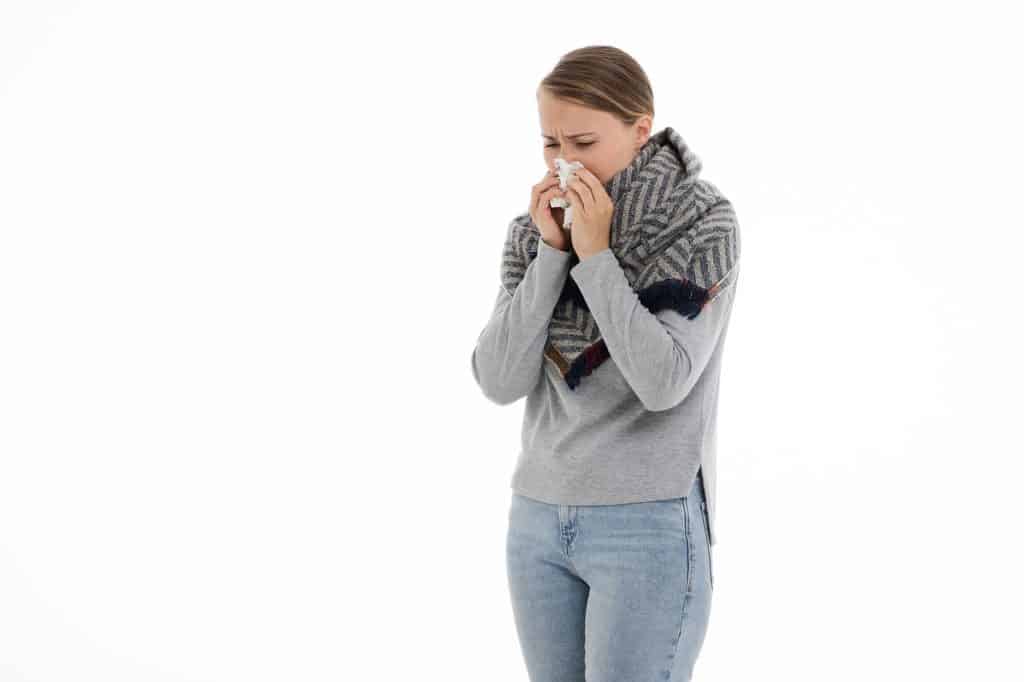
Does cold weather effect piercings?
Indeed, the cold weather effects piercings in more ways than one. The reduced blood flow in the body, which sets in when the outside temperature drops, is detrimental to the healing of the pierced wound. Additionally, the cold weather brings in moisture loss and resultant drying up of the skin, which can be stalling for the healing of fresh piercings. However, cold weather will bring respite to swelling and bloating of the piercing wounds.
The Upside – Winters ,or cold weather in general, are characterised by drop in temperatures, which means a lower volume of blood flows in and out of the region around the wound. What this translates into is a lower swelling of the wound from the inside. Winters also witness reduced chances of infections to the wounds, which may be caused by sweat and perspiration.
The Downside- Winters are characterised by drop in temperatures, which means a lower volume of blood flows in and out of the region around the wound. What this translates into is a lower swelling of the wound from the inside. Winters also witness reduced chances of infections to the wounds, which may be caused by sweat and perspiration.
Another problem for piercings which sprout with winters setting in is to do with the common cold becoming all the more “common”. There are two issues which the common cold poses for piercings, especially the ones on the nose.
1. MUCUS BUILD-UP
Mucus build up is basically a natural fighting response to the common cold virus by the body, but it can work in quite a contrary manner for piercings. Mucus build up can lead to drying deposits(boogers) around the wounds or crusting, which can potentially become a hotspot for bacterial buildup and infections.
2. THE ENGAGED IMMUNE SYSTEM
When you get your body pierced, how your body perceives it is as an obtrusion in it, and sets in the attention of the immune system to fight any infection in it, and rectify it. Thus it needs the immune system to be available completely for the task on handling this new breach in the body . Having a common cold while you are expecting your piercing to heal will divert the attention of the natural immune system, and hence slow the overall healing process.
Can I Pierce My Nose If I Have a Cold ?
Getting a piercing done, when you have a cold, is generally not a great idea. This is because your post piercing period needs a lot of immunity and healing power to be concentrated on the body part being healed, which would be compromised when you have cold. An additional issue specific to nose piercing is the probability of phlegm or cough clogging your nose, which can be harmful to your piercing, both when wet and dry. Wet mucus can stop the free passage of air around the piercing wound and the dry crusting increases the chances of bacterial build up in the vicinity of the wound.
3.2. External Aspects Of Wound Healing
While all the above has to do with the internal action of the body in healing the piercing wound, weather also plays a part in governing factors which drive the healing of the wound externally.
1. DEHYDRATION OF SKIN
Setting in of winters lowers the amount of moisture in the skin, which is yet another impediment to fast healing of your piercing. The dehydration of your skin makes it itchy and dry, hence reducing the ability of the body to effectively form exterior crusting and hence heal the piercing wound.
2. THREAT OF FABRIC ABRASION
Winters see us wearing woolens such as coats and mufflers, which are composed of rougher and steadier fabrics, capable of abrasing the piercing wound. This can scrape off the premature crusting protective layer that develops on the wound ,and hence impede healthy healing of the wound.
Do Piercings Heal Faster In Winter?
As per the medical advice on the topic, winter is not really the best season for faster healing of piercings in particular, and wounds in general. This is because winters are associated with reduced blood circulation in the body , which acts contrary to the healing action of the body. Also the reduced immunity in winters as well as the dehydration of the skin contribute to an impeding healing of the piercing wound. However, many people have also experienced apparent faster healing during winters, largely attributed to the reduced amount of sweating and reduced swelling.
It is important to however realize here that the reduction in swelling does not necessarily suggest that the piercing is healing faster. This is just another symptom of a reduced blood flow in and around the piercing wound in the winter, which causes reduced blood volume around the wound, and hence reduced swelling.
Why Do Piercings Hurt In The Cold?
There are two reasons why people tend to feel an increased amount of pain in their piercings in cold weather. Firstly, the reduced moisture in the air and the skin tends to pull the freshly formed skin crust in the vicinity of the piercing wound, which causes irritation and pain. The second reason has to do with the jewelry dissipating the heat from the wound, making it hurt.
On the latter reason, metal Jewelry in the piercing tends to dissipate heat and make the piecing wound colder. This is why it is recommended that plastic or silicone jewelry must be worn instead of metal jewelry, in piercings during winters.
Is it bad to get piercings in the winter?
Apart from the fact that piercings tend to heal slower and tend to pain more in the winter, getting a piercing done in the winter, might not be such a bad idea, if proper care is given to it. This is because winters see us covering up our body in layers of clothing, which can protect the piercing wounds from external exposure, and keep them warm, hence helping effective healing. In addition, winter poses the advantage of minimal sweating which can in turn help your piercing wounds to heal quickly. This way, winter piercings can heal by the time summers come by , giving you a chance to showcase your piercings in all their glory.
Needless to say, there will be problems of stunted blood circulation and dehydration of the skin, but these can be resolved with circulation improving excercises and rehydration therapy and moisturization respectively.
Which Season Is Best For Getting Piercings Done?
Frankly, as per what experts both jewelry and medical science ones say, there is really no best season for getting piercing done. Weigh the benefits and pitfalls of all seasons and see whatever works or does not work for your specific case. Also, ensuring that you take good care of your piercings and maintain a general hygiene around them goes a long way towards effective healing. This includes cleaning the piercings with seasalt water, using moisturizer , minimal touching or fiddling, amongst others.
PIERCING REJECTION BY BODY
It is crucial to realize that piercings are external objects to the body, and the natural immune action of the body may sometimes be to reject them. This may be another important factor in determining if your piercing is healing, or if it ever will.
How Do You Know If Your Body Is Rejecting a Piercing ?
It is crucial to realize that piercings are external objects to the body, and the natural immune action of the body may sometimes be to reject them. This may be another important factor in determining if your piercing is healing, or if it ever will.
What Piercings Are Most Likely To Reject ?
It is crucial to realize that piercings are external objects to the body, and the natural immune action of the body may sometimes be to reject them. This may be another important factor in determining if your piercing is healing, or if it ever will.
Is It Possible For Piercings To Never Heal?
Healing is a natural phenomenon of the body and hence any piercing that you get done on your body, should eventually heal. However, it may seem like a piercing is not healing or will never heal. This may be either because you did not give it the proper cleaning or care, a medical condition you may have, or the sensitivity to a certain kind of jewelry that you have been putting on. Many experts also feel that piercings done by a piercing gun rather than a piercing needle can take longer to heal, and feel like it isn’t healing at all.
SIGNS OF A HEALED PIERCING
Having gone through the healing process of piercings and all related details, we are finally in a position to identify a healed piercing and all the cues which signal if a piercing has healed or not.
1. No/Less Bleeding, Oozing or Crusties
Having gone through the healing process of piercings and all related details, we are finally in a position to identify a healed piercing and all the cues which signal if a piercing has healed or not.
2. No Piercing Bumps
Having gone through the healing process of piercings and all related details, we are finally in a position to identify a healed piercing and all the cues which signal if a piercing has healed or not.
3. Redness or Tenderness Going Away
Having gone through the healing process of piercings and all related details, we are finally in a position to identify a healed piercing and all the cues which signal if a piercing has healed or not.
4. Free Movement Of the Jewelry
Having gone through the healing process of piercings and all related details, we are finally in a position to identify a healed piercing and all the cues which signal if a piercing has healed or not.
4. No Throbbing
Having gone through the healing process of piercings and all related details, we are finally in a position to identify a healed piercing and all the cues which signal if a piercing has healed or not.
Conclusion
Having gone through the healing process of piercings and all related details, we are finally in a position to identify a healed piercing and all the cues which signal if a piercing has healed or not.

